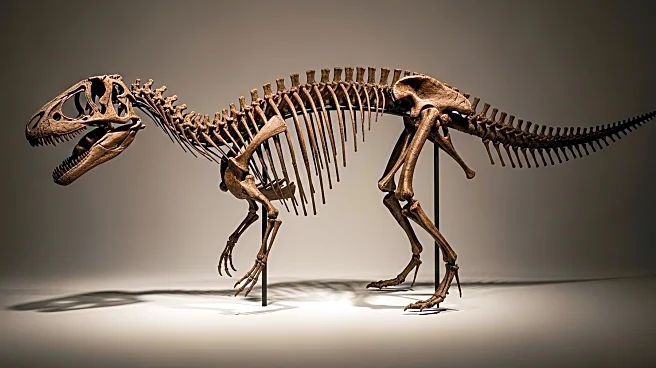What's Happening?
Palaeontologists from the University of Bristol have identified a new dinosaur species named Newtonsaurus cambrensis, following a detailed analysis of a fossil found in 1899 in South Wales. The fossil, which consists of natural molds in limestone rock, was digitally reconstructed using modern 3D scanning technology. The dinosaur is believed to be a large, carnivorous theropod that roamed the area during the Triassic period. The discovery was made possible by advancements in digital scanning, which allowed researchers to reveal new details about the fossilized jawbone.
Why It's Important?
The identification of Newtonsaurus cambrensis underscores the importance of historical specimens in advancing palaeontological research. This discovery not only adds to the scientific understanding of dinosaur species from the Triassic period but also highlights the potential for new findings from existing collections. The use of modern technology in paleontology could lead to further discoveries, enhancing knowledge of prehistoric life and contributing to the field's development.














